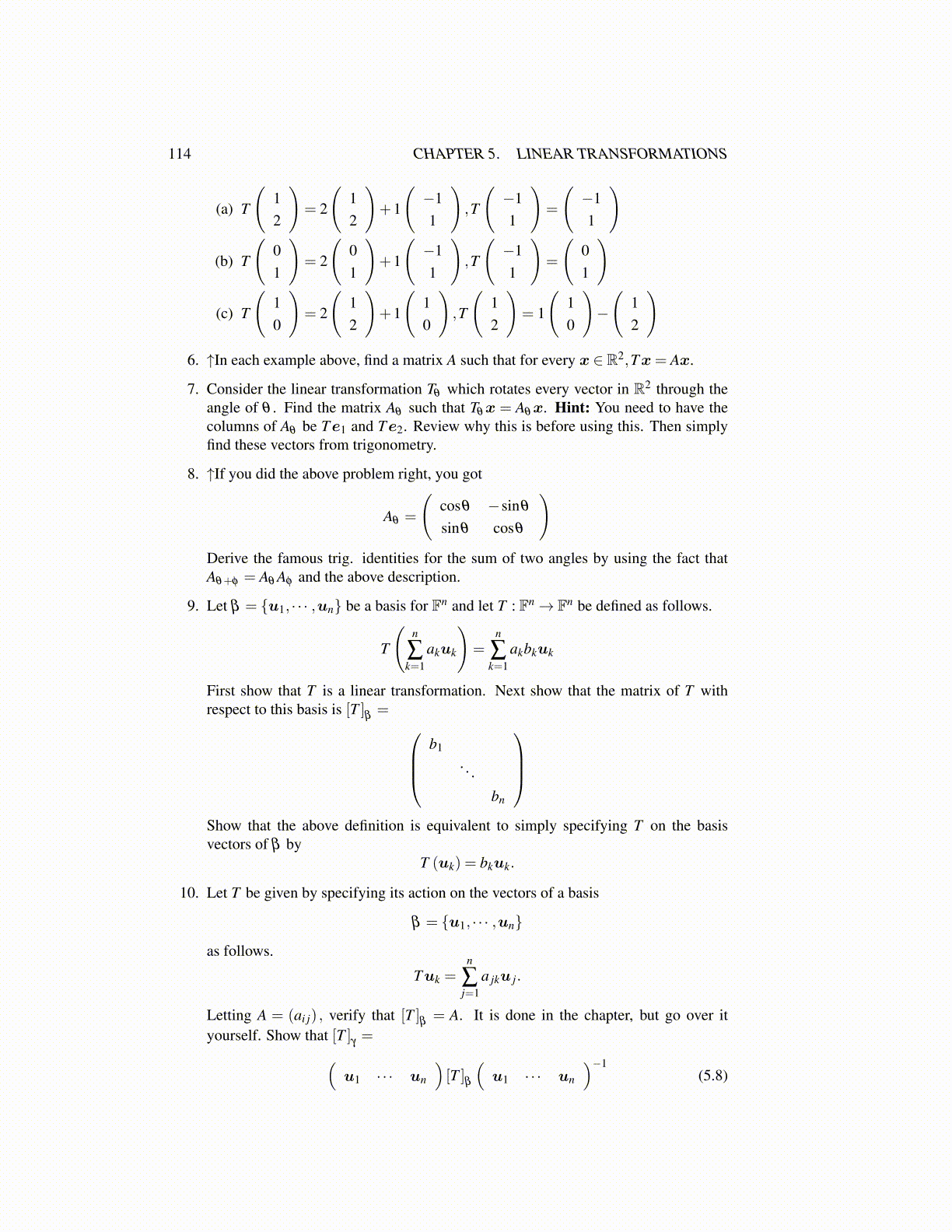
114 CHAPTER 5. LINEAR TRANSFORMATIONS
(a) T
(12
)= 2
(12
)+1
(−11
),T
(−11
)=
(−11
)
(b) T
(01
)= 2
(01
)+1
(−11
),T
(−11
)=
(01
)
(c) T
(10
)= 2
(12
)+1
(10
),T
(12
)= 1
(10
)−
(12
)
6. ↑In each example above, find a matrix A such that for every x ∈ R2,Tx= Ax.
7. Consider the linear transformation Tθ which rotates every vector in R2 through theangle of θ . Find the matrix Aθ such that Tθx = Aθx. Hint: You need to have thecolumns of Aθ be Te1 and Te2. Review why this is before using this. Then simplyfind these vectors from trigonometry.
8. ↑If you did the above problem right, you got
Aθ =
(cosθ −sinθ
sinθ cosθ
)Derive the famous trig. identities for the sum of two angles by using the fact thatAθ+φ = Aθ Aφ and the above description.
9. Let β = {u1, · · · ,un} be a basis for Fn and let T : Fn→ Fn be defined as follows.
T
(n
∑k=1
akuk
)=
n
∑k=1
akbkuk
First show that T is a linear transformation. Next show that the matrix of T withrespect to this basis is [T ]
β=
b1. . .
bn
Show that the above definition is equivalent to simply specifying T on the basisvectors of β by
T (uk) = bkuk.
10. Let T be given by specifying its action on the vectors of a basis
β = {u1, · · · ,un}
as follows.
Tuk =n
∑j=1
a jku j.
Letting A = (ai j) , verify that [T ]β= A. It is done in the chapter, but go over it
yourself. Show that [T ]γ=(
u1 · · · un
)[T ]
β
(u1 · · · un
)−1(5.8)